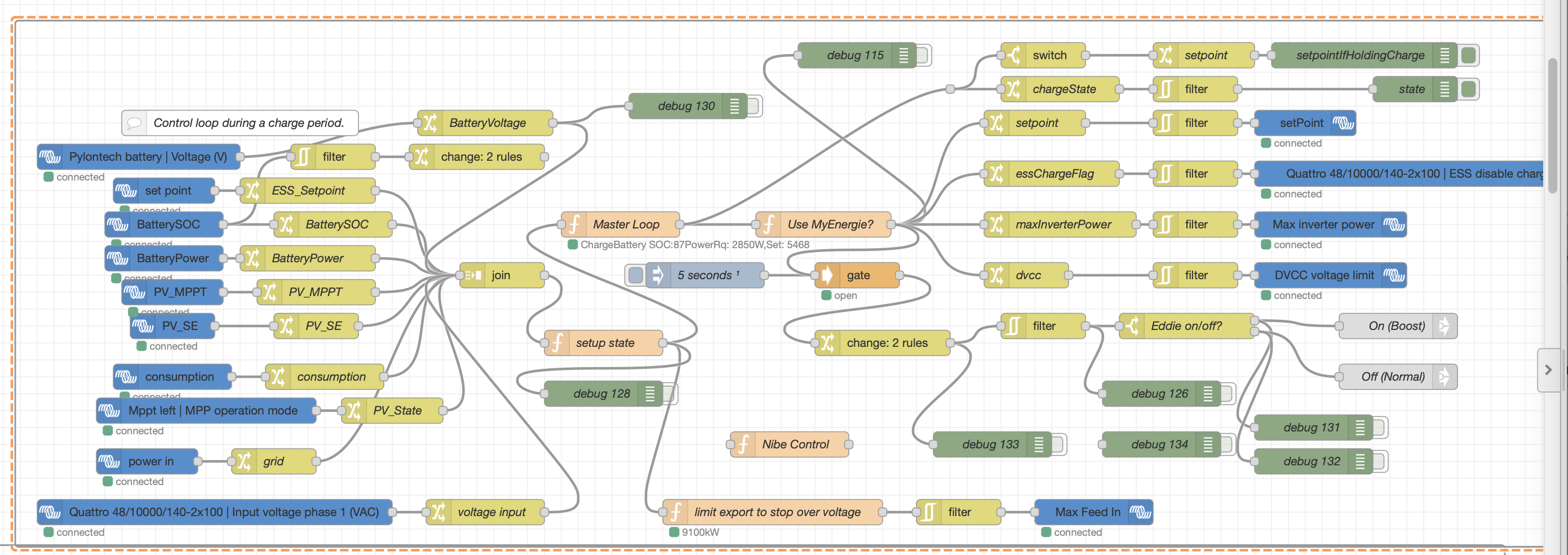For those wanting to roll your own. Here are parts of what I use. I can't just upload my project as there are too many sensitive links/passwords for me to easily sanitise it. However it will give a starting point.
I have an Economy 10 tariff so there are 3 cheap and 3 expensive periods in the day. expensive 0030-0430,0730-1330,1630-2030. The aim is to fill the batteries with enough solar/cheap electricity to bridge the expensive periods. The usage is calculated based on the solar forcast, the temperature forecast (electricity usage for heat pump) and a baseline usage. Minimising charge rates and other little things are done for efficiencies which probably add to a few £100 in savings a year.
figure 1.

Setting up cheap/exppensive periods. I am on E10. Also, SOC during cheap periods can be overridden.
figure 2.

the main loop which takes inputs from the system and decides how to control the quattro based on charging/discharging/holding charge to achieve a calculated SOC. After the master loop certain things can be altered to allow charging Eddie and Zappie.
figure 3.

Determining the SOC to charge to based on the forecasts.

